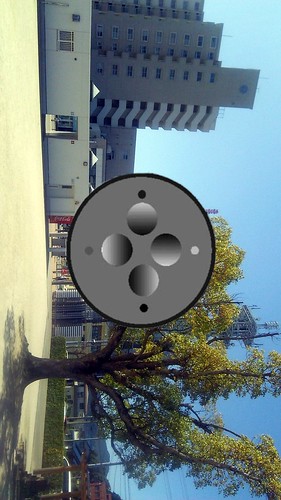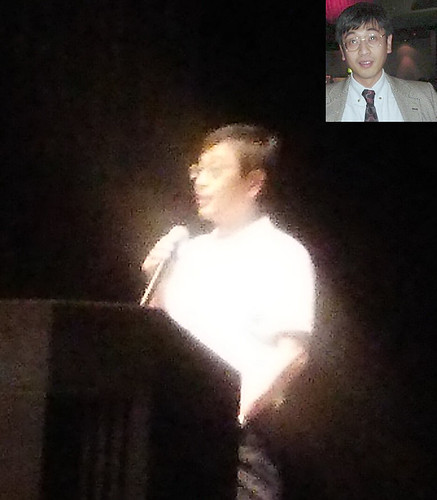Sunday, September 18, 2016
Trad Healthy Japanese Food Packs

Trad Healthy Japanese Food Packs
No one has time to cook, and so many people are single. Lawson to the rescue.
I am not sure what the foods are but I know that they are very tasty and for the most part very healthy. I am not into meat myself so I would not purchase the last three in this list but the rest I would like to eat in great quantity.
Wafuu Salada Japanese style salad
?
NIkujaga, Japanese Beef and potato stew
Chikuzen Ni, Stew from the Chikuzen Region
Yasai Mame, Beans and Vegetables
Kuro Mame, Black Beans
Hokkaidou Kintokimame, Hokkaidou Golden Time Beans
Kinpira Gobou, A root vegetable mix
Kiriboshi Daikon, Cut and dried giant mellow raddish
Hijiki Ni, Stewed (Sargassum fusiforme) seaweed
Takenoko Tosa Ni, Tosa region style stewed bamboo sprouts
Gomoku Shirae Tofu, and 5 types of vegetable
Gobou Konyaku, Root vegetable and glutenous mass!
Third Row
?
Hosaki Menma Some sort of chopped bamboo sprout made spicy
Satsuma Imo Ni, Boiled Sweet Potatoes
Demigurasu Hanba-gu, Demigrasse Hamburg Steak
Chi-zu Iri Hanba-gu ,Hamburg Steak fille with Cheese
Mi-tobo-ru, Meatballs
No one has time to cook, and so many people are single. Lawson to the rescue.
I am not sure what the foods are but I know that they are very tasty and for the most part very healthy. I am not into meat myself so I would not purchase the last three in this list but the rest I would like to eat in great quantity.
Wafuu Salada Japanese style salad
?
NIkujaga, Japanese Beef and potato stew
Chikuzen Ni, Stew from the Chikuzen Region
Yasai Mame, Beans and Vegetables
Kuro Mame, Black Beans
Hokkaidou Kintokimame, Hokkaidou Golden Time Beans
Kinpira Gobou, A root vegetable mix
Kiriboshi Daikon, Cut and dried giant mellow raddish
Hijiki Ni, Stewed (Sargassum fusiforme) seaweed
Takenoko Tosa Ni, Tosa region style stewed bamboo sprouts
Gomoku Shirae Tofu, and 5 types of vegetable
Gobou Konyaku, Root vegetable and glutenous mass!
Third Row
?
Hosaki Menma Some sort of chopped bamboo sprout made spicy
Satsuma Imo Ni, Boiled Sweet Potatoes
Demigurasu Hanba-gu, Demigrasse Hamburg Steak
Chi-zu Iri Hanba-gu ,Hamburg Steak fille with Cheese
Mi-tobo-ru, Meatballs
Labels: blogger, japanese culture, nihonbunka, souzaisho, 日本文化
Saturday, September 17, 2016
Suckable Japanese Ice Cream

This Kawabata Ichiba (market) (map in Doujou Monzen Arcade in Yamaguchi Ciry offers ice cream at 30 percent off the recommended retail price. Note the availability of red bean and green tea flavours both in three different varieties.
There are also suckable Coolish tubes of ice cream are only 130 calories for the chocolate flavour. In contrast to most Japanese foods which are enjoyed primarily with the eyes, which I prefer, one can eat a tube of Coolish ice cream without seeing the brown or white stuff at all.
I think perhaps that the prevalence of suckable foods in Japan is a return to the breast kind of thing. Japan probably has the longest period of breast feeding of any nation in the world, with some mothers breast feeding till primary school. Macfarlane argued that Japanese mothers breast for the longest in Asia (Macfarlane, 1987, see Dykes, Fiona, & Hall-Moran, 2009) and compared to British women only 28% of whom breastfeed their infants at 4 months, nearly 70% of Japanese women breast feed until the end of the 4th and 60% till into the 5th month (Dykes, Fiona, & Hall-Moran, 2009, p.62).
Japanese men especially I think consume suckable food products into adulthood. One ostensible reason for suckable food products is due to Japanese being so busy, which may be true because their is never too much to do for children so matriarchies tend to be busy. Another reason for suckable foods is due to the taboo on public food consumption, especially while standing and worse, while walking. The latter is felt to be an offence both to those required to watch you eat, and to the person who prepared the food which is not being savoured but consumed on the hoof. So in addition to being a possible breast substitute, Japanese suckable foods are also a clever way of eating quickly and surreptitiously.
Bibliography
Dykes, F., & Hall-Moran, V. (Eds.). (2009). Infant and young child feeding. John Wiley & Sons.
Labels: japanese culture, nihonbunka, 日本文化
Friday, September 16, 2016
Cleaning Products Unstolen

Cleaning Products Unstolen
In many of the toilets in my university there are cupboards about half the size of a toilet cubicle containing cleaning products and utensils and toilet paper, the latter at the very least being of value to to university students. When it comes to thievery, as note by visitors to Japan since the Edo period(Bird, 1880; Cocks & Thompson, 2010; Coleridge, 1872; Golovnin, Rīkord, & Shishkov, 1824; Golovnin & Shishkov, 1819), the Japanese are the mist scrupulous people in the world.

This scrupulousness extends to lost property where research has found that Tokyoites were for instance three times more likely than New Yorkers to return wallets containing money to the police (17 of 20 wallets in Tokyo, 6 of 20 in the Big Apple, see West, 2003 and the image above based upon Table 1, p. 374). Alas Japanese scrupulousness does not necessarily extend to all things, especially on occasion to speech acts which are assessed on their imagined consequences. I wonder if there is a way of creating a phonetic version of the Milgram Lost Letter experiment(Milgram, Mann, & Harter, 1965) to test Japanese verbal integrity.
In any event the Japanese are very kind in all ways towards visitors.
Bibliography (all online)
Bird, I. L. (1880). Unbeaten Tracks in Japan: An Account of Travels in the Interior Including Visits to the Aborigines of Yezo and the Shrines of Nikkô and Isé. J. Murray.
Cocks, R., & Thompson, E. M. (2010). Diary of Richard Cocks, Cape-Merchant in the English Factory in Japan, 1615–1622: With Correspondence. Cambridge: Cambridge University Press.
Coleridge, H. J. (1872). The life and letters of St. Francis Xavier : in two volumes. Asian Educational Services.
Golovnin, V. M., Rīkord, P. Ī., & Shishkov, A. S. (1824). Memoirs of a Captivity in Japan, During the Years 1811, 1812, and 1813: With Observations on the Country and the People. H. Colburn and Company.
Golovnin, V. M., & Shishkov, A. S. (1819). Recollections of Japan: Comprising a Particular Account of the Religion : Language : Government : Laws and Manners of the People : with Observations on the Geography : Climate : Population and Productions of the Country : to which are Pre-fixed Chronological Details of the Rise : Decline : and Renewal of British Commercial Intercourse with that Country.
Milgram, S., Mann, L., & Harter, S. (1965). The Lost-Letter Technique: A Tool of Social Research. Public Opinion Quarterly, 29(3), 437,438. Retrieved from http://www.communicationcache.com/uploads/1/0/8/8/10887248/the_lost-letter_technique-_a_tool_of_social_research.pdf
West, M. D. (2003). Losers: recovering lost property in Japan and the United States. Law & Society Review, 37(2), 369–424. Retrieved from bem.law.ui.ac.id/fhuiguide/uploads/materi/mark-d-west.......
Labels: blogger, japanese culture, japaneseculture, nihonbunka, 日本文化
Wednesday, September 14, 2016
Idiotropic or Visual Up Swayed by Images of Self and Others


Which of the grey partially illuminated disks looks the most convex?
Since humans tend to feel that light comes from above, then disk which is "illuminated" from direction that the subject feels to be "above" will appear to be the most convex. This will be likely to be the uppermost disk if one bases ones judgement upon all the information outside the picture, such as the pressure on your skin from your chair, and the historical/narratival information regarding where you know up to be, "idiotropically" (Oman, 2003), and the lowest disk should appear convex if one bases the decision regarding "up" on the visual information in the photograph.
The Japanese are often described as being context dependent, this being due to their "groupist/conformist" tendency to pay attention to others around them (Nisbett & Masuda, 2007). While I accept that there is some truth in this, and that certainly a philosophy of "harmony" is very prevalent in Japan, and that of individualism equally in the West, I argue that in fact the Japanese have a strong visual sense of self and attend to themselves and others visually, largely because their self love and self-division (Smith, 1770/2002, pp.101,102) is in the visio-spatial, rather than in the linguistic domain. Whereas Westerners whisper to themselves in order to evaluate themselves (Bakhtin, 1986; Mead, 1967; Vygotsky, 1986), Japanese imagine themselves using the mirror in their head (Heine, Takemoto, Moskalenko, Lasaleta, & Henrich, 2008).
The philosophies of independence and collectivism are I believe secondary to the differences in mode of self-cognition being due to the way in which members of each culture can obfuscate the self-division. Westerners think that they think because they are talking to themselves, as true individualists might, when in fact they are talking to a horrific intra-psychic "ear of the other" (Derrida & McDonald, 1985). Japanese think that they are concerned with the gaze of real external others as conformists are, when in fact they are watching themselves from a horrific intra-psychic "seeing of detached perception" ("離見の見", Yusa, 1987, p.331). The horror and purported social philosophy (individualism or collectivism) function to keep the self-love hidden, and the self intact.
If Japanese contextualism were driven by a groupist tendency to conform then pictures of people should encourage them to reorientate the direction of up towards the direction of the picture more than those of photos which do not contain people but do contain "intrinsically polarised" objects (Howard, 1982). If Japanese visio-contextuality is motivated as I suggest, by autoscopic self-love, then pictures of other people would be little more likely to influence decisions regarding orientation more than pictures of people-less cityscapes, whereas pictures of themselves would be the most likely to interfere with their visual self-identification and swing the direction of "up" the most.
However, the "Honi Phenomenon" (Dion & Dion, 1976) found that there was less context induced optical illusion in an Ames Room when viewing a loved spouse rather than a stranger, at least in women. This is presumably because people are more likely cut significant, loved others out of the total context, in a way parallel to the "cocktail party effect" (Pollack & Pickett, 1957) wherein, out of a buzz of conversation, one can pick out utterances of ones own name.
The strength of sway of the perceived direction of "up" may therefore be inversely proportional to the significance of the “intrinsically polarized” (Howard, 1982) objects in the visual background.
Image adapted from figure 2 in (Jenkin, Dyde, Zacher, & Jekin et al., 2005)
Bibliography
Bakhtin, M. M. (1986). Speech Genres and Other Late Essays. (C. Emerson & M. Holquist, Eds., V. W. McGee, Trans.) (Second Printing). University of Texas Press. Retrieved from pubpages.unh.edu/~jds/BAKHTINSG.htm
Dion, K. L., & Dion, K. K. (1976). The Honi phenomenon revisited: Factors underlying the resistance to perceptual distortion of one’s partner. Journal of Personality and Social Psychology, 33(2), 170. Retrieved from psycnet.apa.org/journals/psp/33/2/170/
Heine, S. J., Takemoto, T., Moskalenko, S., Lasaleta, J., & Henrich, J. (2008). Mirrors in the head: Cultural variation in objective self-awareness. Personality and Social Psychology Bulletin, 34(7), 879–887. Retrieved from www2.psych.ubc.ca/~heine/docs/2008Mirrors.pdf
Howard, I. P. (1982). Human visual orientation. John Wiley & Sons.
Jenkin, H. L., Dyde, R. T., Zacher, J. E., Zikovitz, D. C., Jenkin, M. R., Allison, R. S., … Harris, L. R. (2005). The relative role of visual and non-visual cues in determining the perceived direction of ‘up’: experiments in parabolic flight. Acta Astronautica, 56(9), 1025–1032. Retrieved from www.sciencedirect.com/science/article/pii/S0094576505000445
Mead, G. H. (1967). Mind, self, and society: From the standpoint of a social behaviorist (Vol. 1). The University of Chicago Press.
Nisbett, R. E., & Masuda, T. (2007). Culture and point of view. Intellectica, (46–47), 153–172.
Oman, C. M. (2003). Human visual orientation in weightlessness. In Levels of perception (pp. 375–398). Springer. Retrieved from link.springer.com/chapter/10.1007/0-387-22673-7_19
Pollack, I., & Pickett, J. M. (1957). Cocktail party effect. The Journal of the Acoustical Society of America, 29(11), 1262–1262. Retrieved from scitation.aip.org/content/asa/journal/jasa/29/11/10.1121/...
Smith, A. (2002). Adam Smith: The Theory of Moral Sentiments. Cambridge University Press. Retrieved from www.ibiblio.org/ml/libri/s/SmithA_MoralSentiments_p.pdf# (Original work published 1770)
101 When I endeavour to examine my own conduct, when I endeavour to pass sentence upon it, and either to approve or condemn it, it is evident that, in all such cases, I divide myself, as it were, into two persons; and that I, the examiner and judge, represent a different character from that other I, the person whose conduct is examined into and judged of. The first is the spectator, whose sentiments with regard to my own conduct I endeavour to enter into, by placing myself in his situation, and by considering how it would appear to me, when seen from that particular point of view. The second is the agent, the person whom I properly call myself, and of whose conduct, under the character of a spectator, I was endeavouring to form some opinion. The first is the judge; the second the person judged of. But that the judge should, in every respect, be the same with the person judged of, is as impossible, as that the cause should, in every respect, be the same with the effect. pp.101,102
Vygotsky, L. S. (1986). Thought and Language. (A. Kozulin, Trans.). Cambride, Massachusetts: MIT Press.
Labels: cultural psychology, japanese culture, nihonbunka, 日本文化
Idiotropic and Visual Judgements of Up

First enlarge the image so that it fills up most of your screen, and then answer the question, which of the four partially illuminated grey disks appears to be the most convex?
Humans tend to feel that light comes from above: the "up" direction as it does in daylight. The direction of illumination is one of the many ways in which humans orientate the up and down in their world. One of the reasons why people may have the illusion that passenger aeroplanes are flying upside down at night, when the ceiling lights are off, is because the only light comes from emergency lights in the floor.
In the above diagram the four partially "illuminated" grey disks will appear to be convex if their shading is felt to correspond to the natural downward direction of illumination. People who judge "up" "idiotropically" (Oman, 2003) based upon what they know to be up from the gravitational sensors in their ears and pressure on the skin, and narratival memory of which way was up before they started looking at the picture, will feel the uppermost disk to be most convex, whereas those that base their judgement of "up" upon the surrounding visual information (the park scene in the background) will feel that the lowest disk is the more convex, with analogue variation between the two.
Both decisions are equally context dependent -- holistic or contextual. Choosing the bottom disk is more visual context dependent whereas choosing the top disk it anything utilises more context information (as detailed in the previous paragraph). I predict that Japanese will be more likely to feel that the bottom disk is convex basing their "up" direction upon visual information, whereas Westerners will be more likely to feel that the top disk is more convex, making an idiotropic context dependent decision.
Image adapted from figure 2 in (Jenkin, Dyde, Zacher, & Jekin et al., 2005)
Bibliography
Jenkin, H. L., Dyde, R. T., Zacher, J. E., Zikovitz, D. C., Jenkin, M. R., Allison, R. S., ... & Harris, L. R. (2005). The relative role of visual and non-visual cues in determining the perceived direction of “up”: experiments in parabolic flight. Acta astronautica, 56(9), 1025-1032.
Oman, C. M. (2003). Human visual orientation in weightlessness. In Levels of perception (pp. 375-398). Springer New York.
Tuesday, September 13, 2016
Contextualism in Time and Space

Possibly the most interesting utterance for me at the recent IACCP conference in Nagoya was that by Yoshi Kashiima in his role as discussant on the presentations by Hazel Markus and Shinobu Kitayama. Professor Kashima expressed interest in the fact that while the Japanese self is contextual (felt to change and changes according to the geo-socio context) it is also time invariant. Wow. A penny dropped.
The Japanese members of the society, or at least those that live in Japan, are incredibly time invariant. The majority of these esteemed researchers appear to be and behave as if in a 'motionless present' (Geertz, ): they have not changed a bit. Consider Professors Shinobu KItayama, Minoru Karasawa, Masaki Yuki, Susumu Yamaguchi. Their appearance especially, and to a large extent their pluck (gennkisa) and even research interest is time invariant. Most seem even to have grown younger.
Western, or Western domiciled esteemed researchers, have on the other either changed in appearance or changed their research interest considerably. Professor Steven Heine is well kept, but does not dye his distinguished hair and has moved from self-enhancement, through the essence of culture, the WEIRDness of Westerners, to sleep. Professor Hazel Markus has moved from theoretical research on the independent self (possible selves), through the famed distinction, choice and now to the application of her student's theory.
The Japanese self is "imaginary" (Naclan, Takemoto), or "lococentric" (Lebra 2005) and as image is bound to its background (Masuda) so changes according to geo-social context. I knew this much before hearing Yoshi Kashima's comment.
But, thanks to Yoshi Kashima I now realise that, it is also true that the Western self as narrative is also contextual. It unfolds in time (Derrida, Heidegger, Bruner) and Westerners have great narratival plans for their lives (Sonoda), whereas Japanese hardly make future plans at all. Westerners are contextual in time!
It is not that Asians are more contextual, it is simply that the dimension in which the self unfolds is different. Japanese are contextual according to the spaces in which they appear, and invariant in the temporal media which is invisible, Westerners are contextual according to the time in their self narrative that they are enacting, but invariant in the un-narrated, and ignored (Masuda) background to their narrative.
These modal difference result in other qualitative differences of course. Japanese can, to a larger extent choose the context in which they exist. Westerners devise their plot-line, but march to the beat of time.
Labels: japanese culture, nihobunka, 日本文化
This blog represents the opinions of the author, Timothy Takemoto, and not the opinions of his employer.

